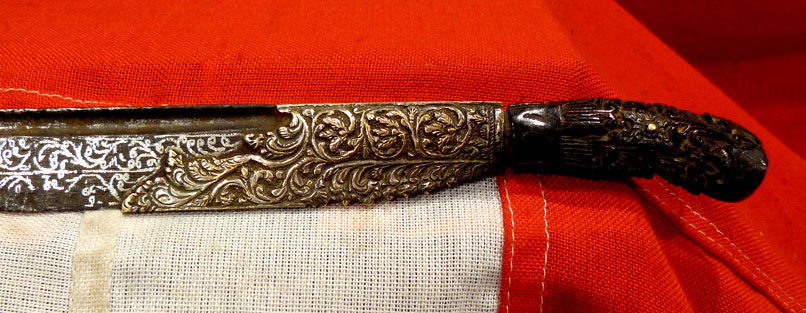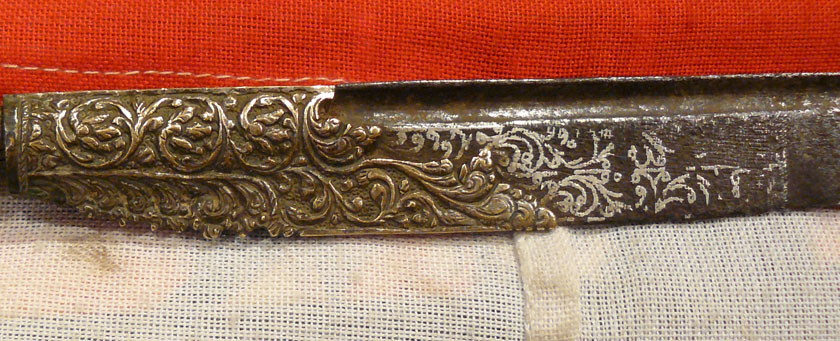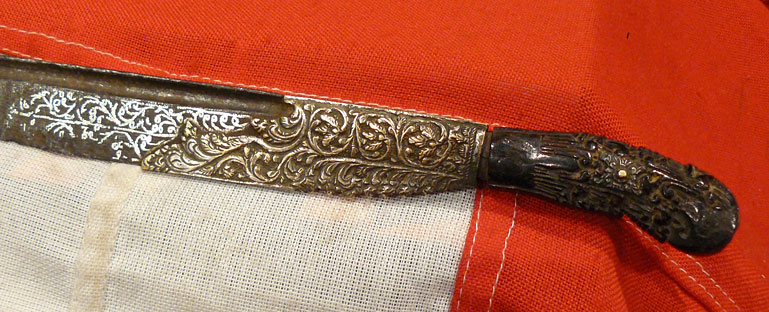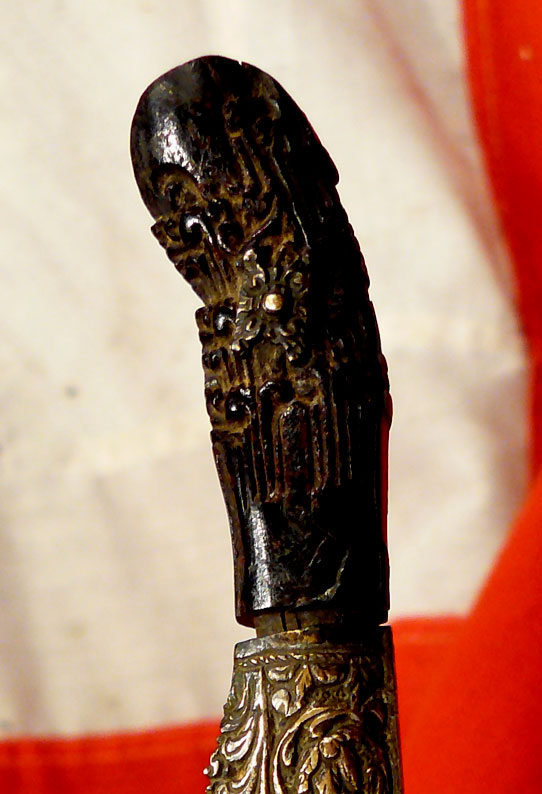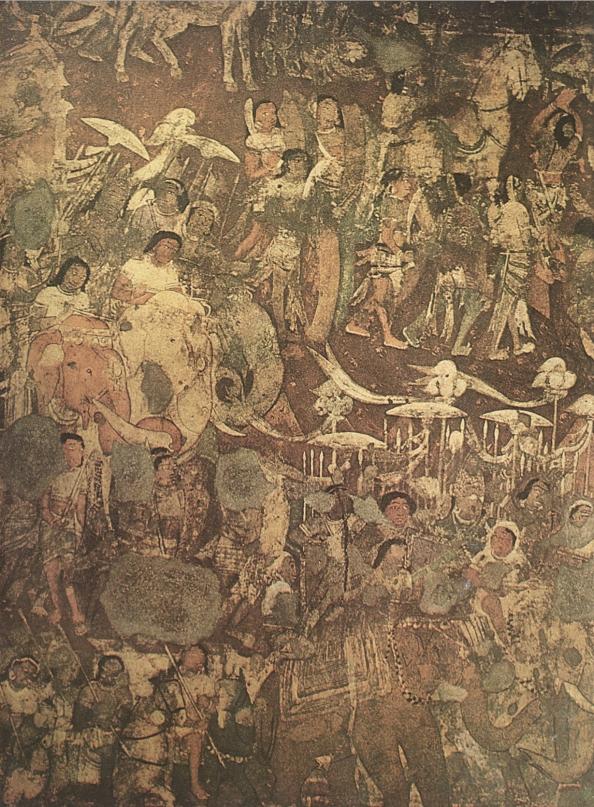A Beautiful Noble's Early Antique Sinhalese Ceylonese Piha Kaetta Knife Dagger
A most engaging ornate pihas and likely made exclusively by the Pattal Hattara (The Four Workshops). They were employed directly by the Kings of Kandy. Kandy, the independent kingdom, was first established by King Wickramabahu (1357-1374 AD). The last Kandyan king was in the early 1800's, and the workshops are no longer in existence today.The simplest are of plain steel, but very graceful form, with wooden or horn handles, and carried in the belt, to lop off inconvenient branches as one passes through the jungle, or, to open coconuts, or cut jungle ropes. From these knives there are all transitions to the finest versions of nobles and princes, the most elaborate and costly of silver or gold inlaid and overlaid knives worn by the greatest chiefs as a part of their formal dress, and possibly never intended for regular use. The workmanship of many of these is most exquisite but this fine work is done rather by the higher craftsmen, the silversmiths and ivory carvers, than by the mere blacksmith. Many of the best knives were doubtless made in the Four Workshops, such as is this example, the blades being supplied to the silversmith by the blacksmiths.
"The best of the higher craftsmen (gold and silversmiths, painters, and ivory carvers, etc.) working immediately for the king formed a close, largely hereditary, corporation of craftsmen called the Pattal-hatara (Four Workshops). They were named as follows; The Ran Kadu [Golden Arms], the Abarana [Regalia], the Sinhasana [Lion Throne], and the Otunu [Crown] these men worked only for the King, unless by his express permission (though, of course, their sons or pupils might do otherwise); they were liable to be continually engaged in Kandy, while the Kottal-badda men were divided into relays, serving by turns in Kandy for periods of two months. The Kottal-badda men in each district were under a foreman (mul-acariya) belonging to the Pattal-hatara. Four other foremen, one from each pattala, were in constant attendance at the palace.This beautiful noble's dagger is stunningly decorated with veka deka liya vela [double curve vine motif] and the flower motif sina mal, and a bold vine in damascene silver. The blade is traditonal iron and the hilt beautifully carved black coral
Code: 14577
695.00 GBP


